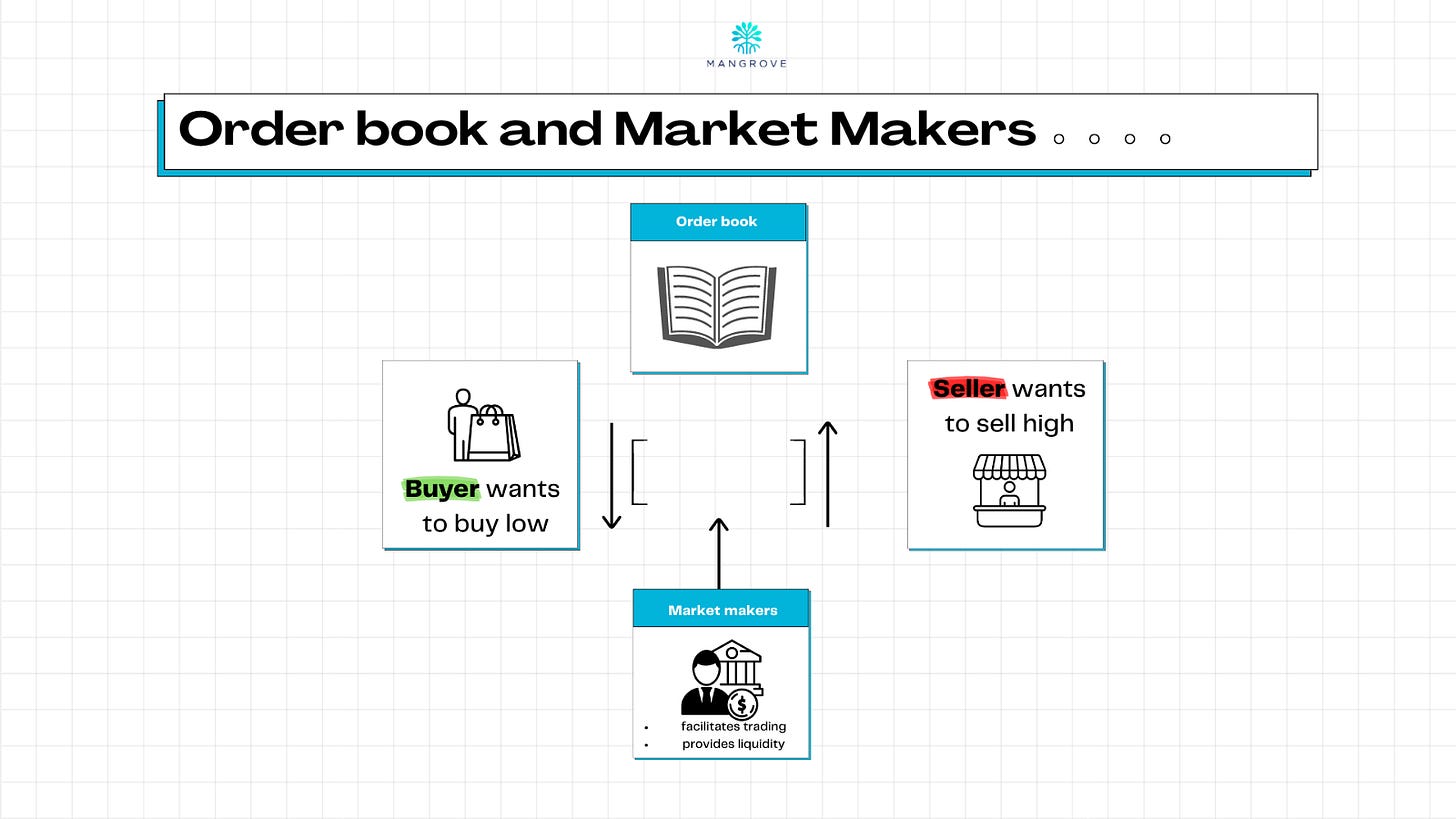Mangrove DAO - Building the Future of DeFi together
With its public launch fast approaching, here is an introduction to the Mangrove ecosystem.
In this article, we will introduce you to Mangrove, aka the DeFi Revolution. You might think that it sounds presumptuous, but we feel we have the arguments to demonstrate it. 💪
What is Mangrove? 🌳
It’s a Decentralized Exchange (DEX)! It’s the new kid on the block.
“Ah, yet another one”, you might think. Well, hold your horses because this one is a different beast.
Mangrove is based on an “order book” model, which you may know from traditional finance exchanges (more on that later). However, Mangrove is particular in that it allows liquidity providers to post arbitrary smart contracts as offers. What that means, is that the listed offers can point to pieces of code: we call them Smart Offers.
As you can imagine, this new flexibility enables participants to post offers that are not fully provisioned. The Mangrove’s order book lists promises instead of locked commitments.
💡 There might be new words and concepts for you here, and that’s okay: we will cover those in the second part of this article.
The promised liquidity can be shared, borrowed, lent somewhere and at the same time displayed on Mangrove, ready to be sourced when (and only when) an offer is taken.
The resulting consequences are far-reaching, because it removes liquidity fragmentation and the lock on assets, allowing its use in multiple places.
This dual use of liquidity is such a competitive advantage that it will become sub-optimal not to amplify reserves on Mangrove, making it the most liquid DEX.
Impressive, right? 😎
So, how does it actually work? What is different about Mangrove compared to what is out there today?
In order to understand, we will explore the evolution of financial systems, starting with Traditional Finance (TradFi), followed by Decentralized Finance (DeFi), and now with the arrival of Mangrove, which is poised to shape the future of finance.
The DeFi Revolution: Total Value Unlocked 🔓
To grasp how novel our “offer-is-code” approach is, let’s start by explaining the purpose of an order book model. This is the system behind today’s traditional stock exchanges.
Traditional Finance and order book model
In an order book model, Buyers and Sellers come together and place their orders. Buyers of course, aim to buy at the lowest price possible, while Sellers aim to sell high. For trades to happen, both parties need to converge on the price.
But what if no agreement is found on price? What if there is not enough coins/products/assets to be bought or sold?
This is where Market Makers come into play. They are people/entities who facilitate trading by buying and selling to satisfy the market — the prices they set reflect the supply and demand. By doing this, they provide liquidity.
For Decentralized Finance (DeFi) players however, this approach brings some concerns: centralization of powers, lack of transparency, forced-reliance on 3rd parties, and no self-custody of assets.
That is why Decentralized Exchanges were created.
The birth of Decentralized Exchanges
Also called DEX, they leverage the principles of Web3 and blow away the negatives aforementioned.
They function differently, using liquidity pools instead of an order book model. “But why”, you might ask.
Well, a simple reason is that on-chain updates can take time, due to the speed of transaction validations of the underlying network. Assuming you would have an on-chain order book, it is easy to see how existing orders can be exploited when there is high price volatility, for example.
That is why in TradFi, Market Makers make a lot of changes to their orders, always adjusting their Buy/Sell prices. Depending on the blockchain network used, this would be slow, dangerous and just impractical. 😬
But wait, what about those liquidity pools we mentioned earlier?
A pool simply contains usually two tokens, creating a trading pair. Liquidity providers (LPs) are required to provide tokens in equal quantities. When trades occur, a small fee is charged, and distributed proportionally to all LPs. Of course there is more to it than that, and that is not the point of this article.
To wrap up on liquidity pools, let’s briefly mention how the price fluctuates: each token swap within a pool results in a price adjustment, according to an algorithm. The ratio of the tokens in the pool influences the price. This is what we call an Automated Market Maker (or AMM), and different protocols may use variations of this.
So… what’s the problem?
While DEXs and liquidity pools remove the dependence on an order book and Market Makers, they also bring their own concerns:
Slippage
It is the price delta between the expected price of a trade and its executed price. How much slippage occurs depends on how much liquidity is available VS the order size.
Uniswap V3, for example, does improve the above but is still subject to those weaknesses because of the way liquidity pools are designed
Slippage is not new to AMM design, and also exist in traditional order book markets
Arbitrage
It is the process of buying an asset on one market place and selling it on another, making a profit. It’s a consequence of AMM design, because the price is influenced by the token ratio within the pool. As an LP, you basically have to share your expected revenue with arbitrage traders.
Fragmented liquidity
For each pair of tokens to be traded, a new pool must be created. That means the overall liquidity of a single token on a DEX is broken into many pools. As new tokens get listed over time, new trading pools must be created; this only gets worse.
Total Value Locked (TVL)
LPs must provide capital beforehand to populate liquidity pools. It is locked away and under-utilized, leading to substantial capital inefficiencies.
Enter Mangrove, the first programmable exchange
As previously said, the main difference between Mangrove and other DEXs is the ability to attach code to offers. This translates into several disruptive features:
Reactive liquidity
The liquidity on offer in the order book is not locked in a pool. As long as an offer posted on Mangrove is not taken, it can generate yield elsewhere on the chain — Aave, Compound or Morpho are great examples.
Last look
Since an offer contains code, defensive mechanisms can be baked in to cancel a promise previously made:
For instance if the market conditions are not anymore satisfactory at the time the offer is taken VS when it was posted
Code can cover any unwanted case scenarios (ex: high volatility), and therefore can mitigate/solve problems of slippage and arbitrage
Code helps make zero-latency trading decisions, with as much information as available on-chain at the time the trade occurs
Persistence
Through the executed code, the offer can automatically repost itself on the order book.
Our cutting-edge DEX is built with the goal to be a new design space for strategists, traders, market makers and other market participants such as DeFi builders, to come up with innovative strategies leveraging the principle of reactive liquidity.
Mangrove isn’t just a product — it’s an ecosystem 🌱
Rest assured, the statement above is not yet another Marketing stunt, in an attempt to differentiate or make noise — allow us to demonstrate in this section.
The next generation order book
As we just saw, Mangrove is what you could call a “next generation” order book. If you are selling apples for oranges, you don’t need to provide the apples upfront and have them sitting idle in a vault, under-utilized and slowly rotting away.
Any person, trader or entity can run their own personal, custom-made strategies by listing code in place of offers. Yes, you might feel like we are repeating ourselves but this is precisely where the essence of Mangrove lies.
Anyone can write strategies, develop an app, integrate their project, taking advantage of the previously mentioned principles. Mangrove effectively becomes the cradle of crypto trading innovations.
As an example, we are about to release a first trading strategy, called Kandel. You will be able to use it via our Web UI or SDK. It will be publicly available to use and tweak. Kandel is only a leading example, here to inspire other ideas. For us, it is not the end of the line — it is the beginning.
That is how we want to measure success: we aim to create a growing, organic ecosystem that comes up with disruptive new ideas on its own, all enabled by Mangrove as a platform.
Researching new concepts
It is worth noting that our team is composed of both engineers and researchers, which is not common in our space. We are proud to work with top-class PhDs and academics, who create innovative strategies and solutions for DeFi. They are always on the lookout for new inventions.
An example of what Mangrove could enable is partial liquidation, where someone with a credit line wants protection/reevaluation before his position gets fully liquidated. This would lead to fewer liquidations on borrow/lend protocols.
Another idea is Carbon tokens trading (i.e. tokens issued from Carbon Credits). Following its principles, Mangrove could allow Carbon markets to amplify their liquidity by listing tokens in several pools, and provisioning them only when offers are taken.
Join and build the Mangrove Community 🔨
As we get closer to the launch of our first product version, we would love to expand our horizons and welcome new participants in our Community.
We already met with many excited players, who are collaborating with us to integrate and explore the possibilities offered by our DEX.
We will soon be deployed on Polygon network, and plan to integrate with other chains in the future.
That’s all for now folks!
We hope you enjoyed reading about Mangrove. 🤓
If you want to stay ahead of the curve, don’t forget to join our Discord and follow us on Twitter. For those wanting to go further, our whitepaper and developer documentation are the perfect dive into the nitty-gritty details.
Happy exploring Mangrovians 🐒🌳








great